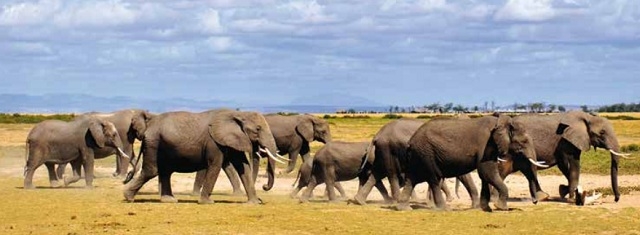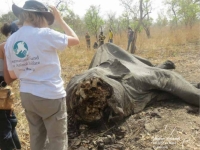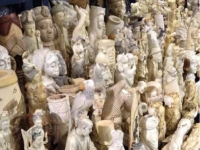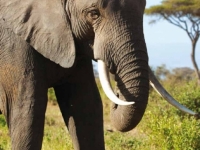Health
DO WE NEED AN ELEPHANT IVORY TRADE TO RESPOND TO A CERTAIN DEMAND ?
GREAT THREAT TO SPECIES SURVIVAL

(Source: IFAW)
Ivory seizures suggest that some 25,000 to 50,000 elephants were slaughtered in 2011 to furnish the demand for ivory. The demand for ivory has arguably become the gravest threat to the survival of these iconic species. Today, the global demand for this "white gold" is such that elephants across their distribution in Africa and Asia are in even greater peril from the illegal trade in their tusks.
Elephants are widely distributed in sub-saharan Africa with a total population of 470,000 to 670,000, whereas through their range in South and Southeast Asia the total population is no more than some 52,000. With growing human populations and their need for land and ressources, however, human-elephant conflict is widespread in both Africa and Asia. But, it is the escalating slaughter of elephants for their ivory that is exacting a massive toll of their numbers, especially in Africa but also to some extend in Asia.
From China to Thaïland to the USA, the European Union and elsewhere, there is a powerful desire and demand for elephant ivory in one form or another. African elephant populations, as the single greater source of ivory, are being ravaged in many range states for their "white gold".
Poachers cross national borders with impunity to raid regions inhabited by elephants. Without fear of reprisal and disregarding wether they are in protected areas or not the ivory hunters, knowingly, illegally and indiscriminately, kill herds of elephants in Africa and Asia.
Poachers cross national borders with impunity to raid regions inhabited by elephants. Without fear of reprisal and disregarding wether they are in protected areas or not the ivory hunters, knowingly, illegally and indiscriminately, kill herds of elephants in Africa and Asia.
With one-third of the tusk embedded deep in the elephant head, removing the tusk is a barbaric and mutilating process ending in the death of the victim. Once the tusks have been hacked from the elephants, the smuggling process starts. Because of porous national borders poachers can easily move the ivory via circuitous routes through neighbouring states and national borders to reach the predominant international air and seaports.
With increasing security at international airports, most of the ivory is being smuggled to seaports on the East African coast, notably Dar es Salaam (Tanzanie), Mombasa (Kenya) and Maputo (Mozambique).
With increasing security at international airports, most of the ivory is being smuggled to seaports on the East African coast, notably Dar es Salaam (Tanzanie), Mombasa (Kenya) and Maputo (Mozambique).
More recently significant hauls have been intercepted in Cape Town and Durban (South Africa) and from Togo and Nigeria (West Africa).
From the transit states, the ivory makes its way to four dominant destinations, Vietnam, Thaïland, Japan and China. The Republic of China makes up more than half the world demand for raw ivory. Once inside these countries, ivory is carved into collectable ornaments and souvenirs and legally sold, under a loosely enforced certification system, to a thriving market. There is evidence to suggest that ivory is being traded inside the African domestic market, but this is dwarfed by the trade in Southeast Asia.
International Fund for Animal Welfare
From the transit states, the ivory makes its way to four dominant destinations, Vietnam, Thaïland, Japan and China. The Republic of China makes up more than half the world demand for raw ivory. Once inside these countries, ivory is carved into collectable ornaments and souvenirs and legally sold, under a loosely enforced certification system, to a thriving market. There is evidence to suggest that ivory is being traded inside the African domestic market, but this is dwarfed by the trade in Southeast Asia.
International Fund for Animal Welfare
Ruby Bird Elephant Ivory Trade Survival Species Iconic Global Demand White Gold Africa Asia Japan Usa Europe Illegal Slaughter Ressources Human Thailand China National Borders Hunters
Liability for this article lies with the author, who also holds the copyright. Editorial content from USPA may be quoted on other websites as long as the quote comprises no more than 5% of the entire text, is marked as such and the source is named (via hyperlink).









